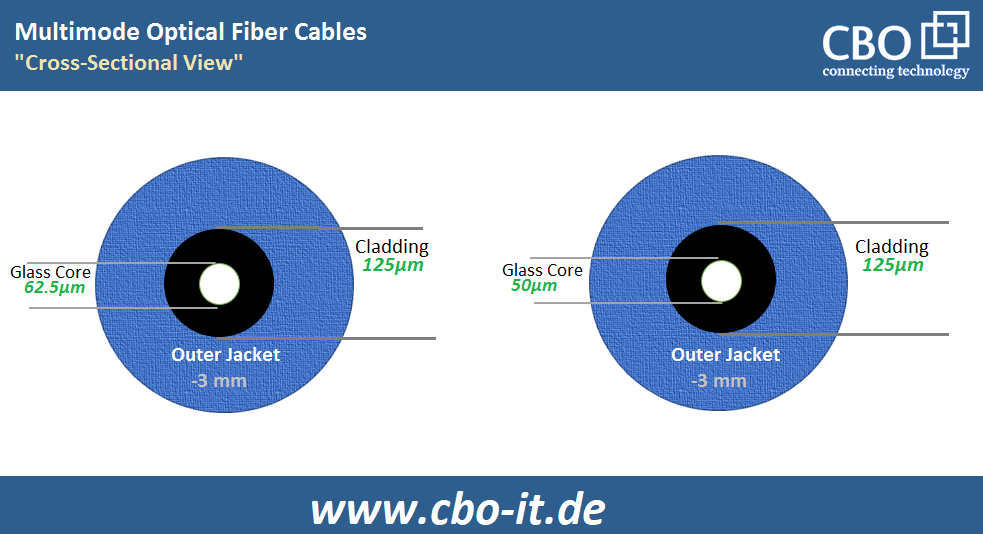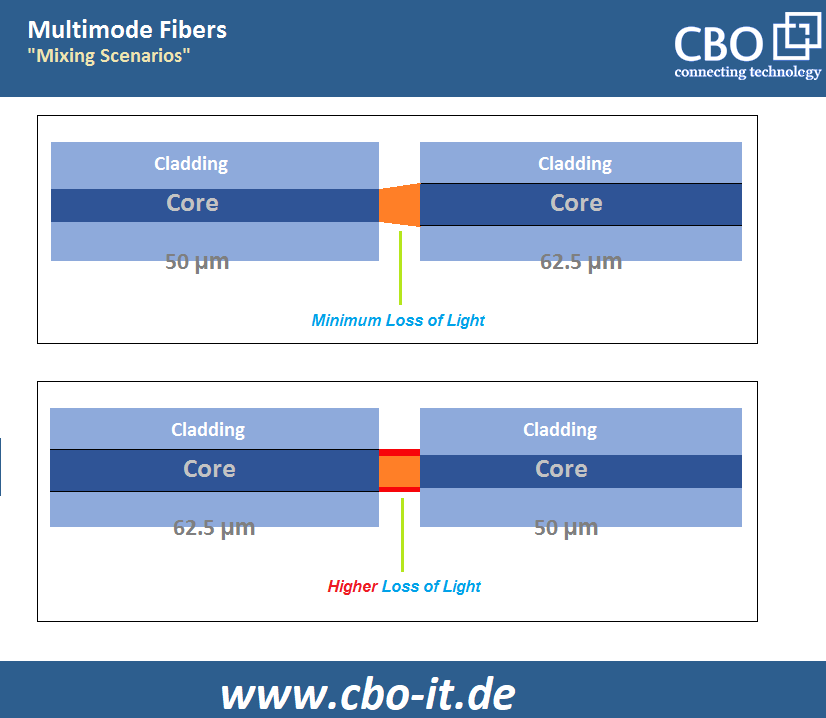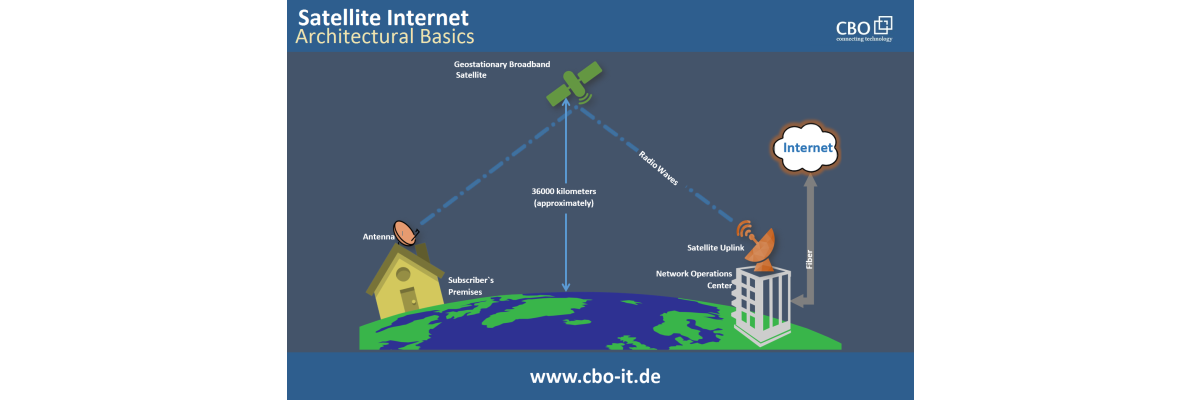Multimode fiber normally refers to 62.5/125μm fiber and 50/125μm fiber. These numbers 50μm and 60μm represent the diameters of the core (plastic or glass) inside the optical cable. The fiber core of the cable carries the light which is used for data transmission. Whereas 125μm indicates that the diameter of the cladding, which surrounds the core to protect it and to prevent the leakage of the light. The maximum achievable bandwidth is a function of the cable`s core size.

Generally, multimode fibers are divided into five categories; OM1, OM2, OM3, OM4, and OM5. Among these fiber grades, OM1 is the only 62.5/125μm fiber whereas the other ones are 50/125μm fibers. Multimode fiber allows the propagation of multiple light modes in the fiber core simultaneously. The five types of multimode fiber (MMF) differ in terms of transmission distance and data transfer rate as well. A fiber cable with a smaller core diameter or core size can offer higher transmission rates and distances. Whereas, a cable with a bigger core offers higher bandwidth but comparatively lesser transmission distance and data rates.
Mixing of Multimode Optical Fiber
Normally 62.5μm fiber and LED light sources are utilized in 10/100Mbps Ethernet. however, 62.5μm fiber is not compatible with a new type of light source called VCSEL. VCSELs offer much faster switching rates than that of the LEDs – a feature that makes the vertical-cavity surface-emitting laser (VCSEL) a better choice for higher data transmission rates. High bandwidth and high data transmission rates have become a challenge for the rapidly evolving network industry. When it comes to transmission distances, 62.5μm fiber is not even closer to 50μm fiber performance. Therefore, most network operators prefer laser-optimized 50/125μm fiber for 1 to 100 Gigabit Ethernet applications instead of the conventional 62.5μm fiber. But, 62.5µm fibers are still used in various applications, and exist optical fiber networks are using this technology. At times, the mixing of 62.5µm and 50µm fibers become inevitable.

Multimode Optical Fiber Mixing Challenges
There are two cases for mixing 62.5µm and 50µm fibers. The first case is related to the traveling of light from the 50 µm fiber to the 62/125 µm fiber. Whereas, the second case is related to the traveling of light from 62.5µm fiber to 50 µm fiber.
However, serious connectivity issues may arise when it comes to the second case where light should exit the core of the 62.5 µm fiber and enter a relatively smaller 50 µm fiber. In some cases, a link comprising of the two types of multimode fibers may completely fail. The reason behind these issues is the difference between core size of different multimode fibers.
As the first case is concerned, the smaller core diameter of the 50 µm fiber allows easy coupling to the core of the 62.5 µm fiber, and the possibilities of network interruption because of angular misalignment and offset remains very low. Unfortunately, a similar is not the case when a link is upgraded from a 62.5/125µm fiber to a 50/125µm multimode fiber because in this case, the light tends to escape into the cladding of the 50/125µm fiber. Such a link cannot be deemed as a reliable one in case if the loss of light is greater than the limits defined by various optical fiber technology regulating bodies. Generally, it is considered that the coupling loss of a mixed fiber link should remain within the range of 0.9 dB to 1.6 dB. In cases where the coupling loss exceeds that limit, the mixing of 62.5μm to 50μm fibers is not recommended.
Possibility of linking 62.5μm Fibers to 50 µm fibers
As we have discussed above, there is a defined range or reference range available for fiber mismatch coupling losses. However, the determination of the real loss can never be estimated precisely without practical evaluation. According to the tests conducted by various organizations including the FOA; systems operating with VCSELs tend to generate fewer coupling losses than the systems operating with LEDs as light sources.
In this regard, the experiment-based test reports from Corning contain plenty of valuable information available on the possibility of mixing between different multimode fibers. According to Corning reports, mixing between multimode fibers is a feasible solution for systems operating with either LED type or LASER type light sources. So, the mixing of 62.5μm Fibers to 50µm fibers is a subject that cannot be generalized and must be evaluated on a case to case basis.
Today, we have optical loss test sets available which can be used for quick determination of link losses. Datacenter operators should consider constructing a model link while for studies while planning for a massive link up-gradation. Check that link for losses and proceed with the upgrades in case if the coupling loss is within the range that can be tolerated by your link budget.
What is the Best Mixing Approach available?
In light of the facts mentioned earlier, we can safely state that the mixing of different multimode fibers is possible. however, coupling losses are inevitable in mixed, optical fiber networking links especially when it comes to the mixing of 62.5μm fibers and 50 µm fiber links. Well, in such cases the incorporation of an additional electronic interface between the two types of fibers would be the best approach. Electronic interfaces such as media converters, switches, and routers can help you in the construction of a reliable mixed fiber link. Through this approach, we can separate the two types of fibers while still having the two employed for the completion of an optical fiber link.
Conclusion
Mixing of different multimode fibers is possible provided that the fibers in question are compatible with each other. However, coupling losses are inevitable when fibers with different core diameters are mixed. As a whole, according to various experts and equipment manufacturers mixing of different fibers should not be considered in a single link.
We have various studies and test results available to predict the chances of a mixed fiber link`s operability and integrity. Still, it isn’t an established science and actual coupling loss can only be determined through practical experiences. One of the best fiber mixing approaches is the incorporation of an electronic interface when two different types of fibers are needed to be mixed.
 English
English
 Deutsch
Deutsch
 Espaniol
Espaniol










